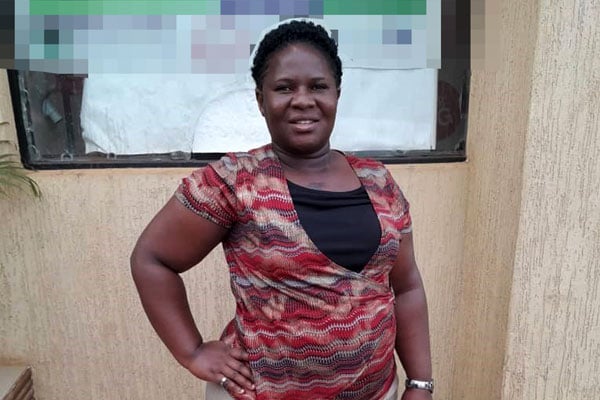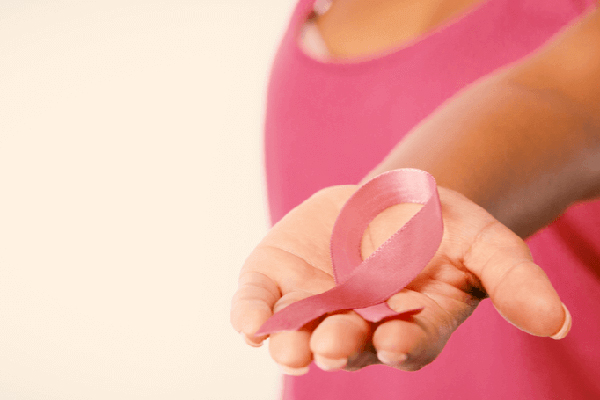It took a year for Akomolot to get a proper breast cancer diagnosis

Akomolot is glad to be cancer free. PHOTO | BEATRICE NAKIBUUKA
What you need to know:
- During self-examination, Akomolot felt a lump in her breast. However, for almost a year, doctors told her the lump was not cancerous. She is thankful that she was finally able to get a proper diagnosis and timely treatment that eventually saved her life.
Patricia Akomolot has been a cancer survivor since November 2020. The 35-year-old administration officer at the Electoral Commission, discovered a lump in her breast after receiving a WhatsApp message giving tips on self-examination in April 2019.
“During the self-examination, I felt something hard in my right breast. Initially, my nipple would itch but since I did not know the signs of cancer, I thought it was a sign that I was about to get my period. None of my family members had ever suffered from cancer so I had no reason to suspect it,” she says.
In June 2017, Akomolot had suffered a stillbirth due to pre-eclampsia and had been given medicine to dry up the breastmilk. Throughout 2018, she felt healthy although, she had misunderstandings with her fiancé so they separated.
Diagnosis
The lump, she thought, was as a result of not being able to breastfeed her baby and when she noticed it, she went to a friend, who is also a doctor, for further consultation. After examination, the friend prescribed antibiotics for three months and said if it is an infection as a result of not breastfeeding, it would clear.
“However, after the treatment, I noticed that the lump had grown bigger although I did not feel any pain. My friend then recommended that I go for a Computed Tomography (CT) scan and a mammogram for further diagnosis,” she says.
The scan showed a non-cancerous tumour although the results were inconclusive. Akomolot was told to go for a mammogram and although she was only 32 years old (recommended age is usually 40), it was the only test to confirm whether she had cancer. However, even after this test, she did not get conclusive results. She was told the lump was non-cancerous although it kept increasing in size. Akomolot’s friend referred her to the Uganda Cancer Institute (UCI) since he suspected that it could be cancer.
“Although I had been told not to worry, I had consulted a private surgeon to have the lump removed. I just wanted to be sure what it was. By the end of the year, I still had no conclusive diagnosis but was told to go back for review after three months,” she says.
When she went back for the review, a lockdown had been introduced and although she found her way to Mulago National Referral Hospital, UCI had been gazetted as a reception centre for Covid-19 patients so she missed her appointment.
“I was frustrated because the lump had grown bigger and there was a bloody discharge from the nipple. Although I had been told it was non-cancerous, I was worried and confused,” she says.
Since she still lived with her parents, one day, her young brother who was studying medicine went to her bedroom and noticed her blood stained bedsheets. He told her that this was not a good sign and told the whole family that Akomolot needed immediate medical attention.
With her brother’s help, she contacted a gynaecologist at Platinum Hospital in Kampala, who after examining the breast said it was cancer but needed to do a biopsy to confirm the diagnosis. The results after three days confirmed an aggressive type of cancer and she had to start treatment as soon as possible.
“I was shattered. I do not have a child, how could I have cancer? But my family was there for me. I opened a file to start treatment and met Dr Victoria Walusansa who advised us on the steps to take such as the tests that needed to be done before starting treatment. Fortunately, all these were done within a week,” Akomolot says.
Treatment
In June 2020, she started treatment and her plan included six cycles of chemotherapy with a three weeks interval. At first she was scared but after meeting other cancer patients who shared their experiences, she found the strength to fight the disease.
“I realised that I was not alone. The first cycle felt like any other IV treatment. I only suffered a little nausea and vomiting. After the second cycle, my hair started weakening so I cut it off,” she adds.
Since she felt strong, she would even go to work although her supervisor and human resource manager had encouraged her to take as much time off as she needed. With the third cycle, her skin darkened but fortunately, she had a good appetite and gained weight.
“I had bought a wig but the third cycle came with hot flashes and I would sweat even on extremely cold days. I discarded the wig and did not care what people said about my bald head and excess weight. I would drink a lot of fluids and take a lot of fruits and vegetables,” she says.
By the forth cycle, the lump had started shrinking and the discharge had stopped. Because she had responded well to the treatment, she had her last cycle in October 2020. However, she was told that the breast had to be removed.
“I thought the treatment had worked and did not want to lose my breast but I was told this was the only way to prevent the cancer from spreading to other parts of the body and increase my chances of survival,” she says.
Surgery
On November 3, 2020, Akomolot’s underwent a mastectomy (a way of treating breast cancer by removing the entire breast through surgery). After three months, she went for review and was told to undergo radiotherapy (a cancer treatment that uses high doses of radiation to kill cancer cells and shrink tumours). This treatment would last three weeks for every week day. She was also given Tamoxfen which she must take for about five years and this, she religiously takes every day.
After the surgery, she did not know how to live with one breast. She says, “I would pad my bra but my breasts would not be even. A colleague at my workplace, who is also a cancer survivor referred me to the Uganda Women's Cancer Support Organisation where after becoming a member I was given a prosthetic bra. Now, it is impossible to tell that I have one breast.”
Akomolot is thankful that she was able to receive treatment and beat cancer. She encourages everyone to always self-examine their breasts and if they notice anything odd, to visit a doctor as soon as possible.
After all, the earlier the diagnosis, the better chances of beating cancer.
What to look out for
Different people have different symptoms of breast cancer. Some people do not have any signs or symptoms at all.
Some warning signs of breast cancer are:
● New lump in the breast or underarm (armpit).
●Thickening or swelling of part of the breast.
●Irritation or dimpling of breast skin.
●Redness or flaky skin in the nipple area or the breast.
●Pulling in of the nipple or pain in the nipple area.
●Nipple discharge other than breast milk, including blood.
●Any change in the size or the shape of the breast.
●Pain in any area of the breast.
Keep in mind that these symptoms can happen with other conditions that are not cancer. If you have any signs or symptoms that worry you, be sure to see your doctor right away.




